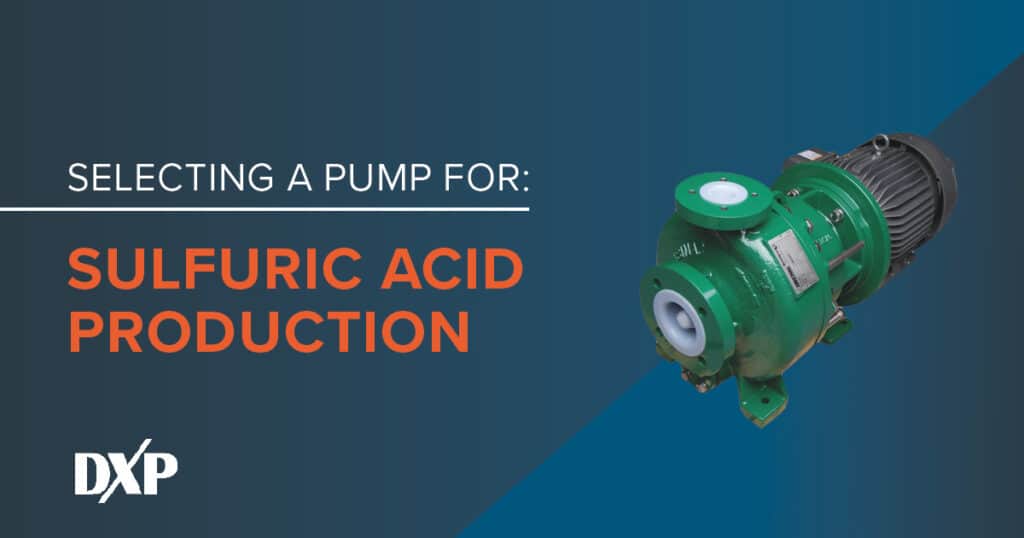Sulfuric acid is sometimes known as the “king of chemicals” because it is the most widely used chemical in the world. It is used in many different industries and applications, including chemical processing, auto manufacturing, agriculture, petroleum refining and metal processing. It is a key part of the manufacturing chain of thousands of products consumers use every day.
Though commonly used in industry, sulfuric acid is a dangerous and corrosive chemical. It is classified as a human carcinogen and can cause serious health problems if ingested, inhaled or touched. Sulfuric acid creates a violent exothermic reaction when it comes into contact with water.
This behavior makes safety a big concern when sulfuric acid needs to be pumped. The biggest challenges of pumping are external emissions and seal failure. Any leaks can literally be deadly.
Sulfuric Acid Pump Selection
A sealless pump design is recommended when processing sulfuric acid and other similarly hazardous fluids and chemicals. Rather than a packed gland or standard seal, sealless pumps utilize a static containment shell. This completely seals in the liquid end and provides better corrosion resistance when dealing with harsh chemicals. Magnetic drive systems are also very popular and generally feature sealless designs to eliminate leaks and emissions.
Improved Energy Efficiency
Another critical factor in sulfuric acid pump production is energy efficiency. Producing this chemical expends a lot of energy—up to 40-50% of operating costs for sulfuric acid production plants. Production pumps should feature an energy-efficient hydraulic system and low net positive suction head (NPSH). Sealless magnetic drive pumps with the right features and configurations can eliminate eddy currents and prevent hysteresis losses. A non-metallic containment shell is recommended to reduce energy consumption and minimize excess heat generation during operation.
Pump Safety
Sealless pumps are great to prevent leaks, but sulfuric acid processing often demands additional protection. It’s vital to keep your workers safe and protect the environment from hazardous leaks and emissions. Sulfuric acid pumps should feature a secondary containment option to stand up against high temperatures and pressures. Your pump system should be tailored to the chemical(s) you are transferring for safety, efficiency and durability.
Pump Maintenance
Sealless pumps can help reduce downtime for maintenance and uptime for production. There is no need to replace seals and there are fewer components that wear down through use. The right sulfuric acid pump can minimize your maintenance costs.
Benefits of Sealless Pumps for Sulfuric Acid Applications
There are a number of benefits the right sealless pump can provide when producing or transferring a chemical as dangerous as sulfuric acid:
• No EPA monitoring
• No seal or seal support system maintenance
• Leak-free operation
• Zero emissions
• No contamination of process fluid
• Increased uptime
• Improved energy efficiency
• Reduced maintenance time
• Enhanced worker safety
• Better environmental protection
To learn more about sealless pumps from leading manufacturers like ANSIMAG, Blackmer, Liquiflo, Milton Roy and HMD Kontro, contact DXP Pacific today. Let our team help you find the right pump for your specific chemical processing application.

